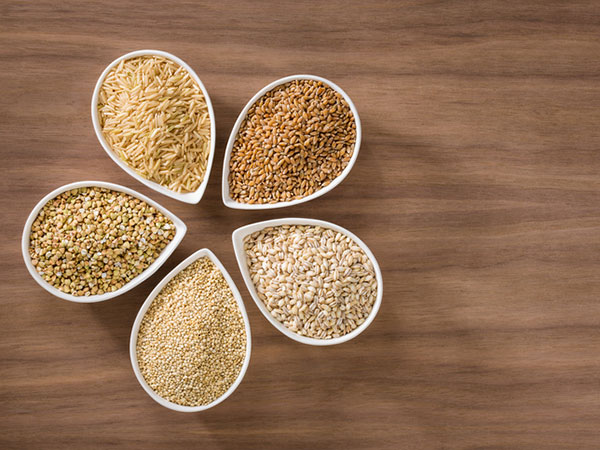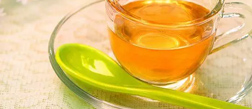Your Location:Home - Hot Topics > - Content
News and Information
5 Whole Grains to Keep Your Family Healthy
Time:2017-04-19 12:11:36
Source:Academy of Nutrition and Dietetics

Next time you go shopping, help keep your family healthy by choosing whole grains over refined grains. Whole grains (such as buckwheat, brown rice, hominy and oatmeal) are more nutritious than refined grains because they contain the fiber-rich outer bran layer, the nutrient-packed germ and the starchy endosperm. Refined grains (such as white bread, white pasta and white rice) contain mostly the endosperm.
In the past, whole grains were thought to provide mostly fiber to promote digestive and heart health, but newer research has revealed that they provide additional vitamins and minerals, plus high levels of antioxidants and other healthy plant-based nutrients. No matter which whole grain you prefer, make sure the ingredient list includes whole grains or that the label reads "100-percent whole grain."
Here are five whole grains you've got to try!
Amaranth
Gluten-free amaranth is considered a complete protein because it contains all of the essential amino acids in proportions that humans need, including lysine which other grains tend to lack. Additionally, it's a good source of minerals such as iron, magnesium and zinc, plus it offers some calcium and potassium. In South America, amaranth is popped like miniature popcorn. "Most kids love pasta, and amaranth can be used as a substitute for couscous or orzo," said Nancy Z. Farrell, MS, RDN, who is a spokesperson for the Academy of Nutrition and Dietetics. "Use amaranth flour to make tasty baked products like zucchini bread, carrot cake or blueberry muffins and pancakes."
Barley
Barley is a fiber powerhouse. Hulled barley has more fiber-rich bran than pearled barley, "but both contain beta-glucan soluble fiber that slows the absorption of glucose, and helps to keep blood sugar levels stable, thus providing sustained energy throughout the day," says Farrell. Barley also contains selenium, a powerful antioxidant. Barley is great added to soups or used to make a pilaf. It can even be made into a hot breakfast cereal. Hulled barley will take more time to cook than pearled barley, about 50 to 60 minutes.
Oats
Oats also contain beta-glucan fiber which can lower cholesterol and help strengthen the immune system. Oats boast polyphenol compounds that have antioxidant and anti-itch properties. Besides the age-old favorite oatmeal for breakfast, oats can be added as a binder to meatloaf and burgers. Oats also work well in baked goods including oatmeal cookies, as a crunchy topping to crisps and crumbles, and even in casserole dishes.
Quinoa
Like amaranth, quinoa contains all nine essential amino acids and is gluten-free. Moreover, quinoa is an excellent source of magnesium and a good source of zinc, iron and folate. "Quinoa is easy to make," said Farrell. "While not required, toasting quinoa before boiling it in liquid enhances flavor, as does cooking it in vegetable or chicken broth." Quinoa can be made in a rice cooker, as well. Before cooking, use a fine mesh strainer to rinse the quinoa and remove the outer coating, called saponin, which can give the quinoa a bitter taste. Quinoa is fun for kids because it pops in the mouth when chewed and comes in several colors: beige, red, black and even purple. Mix quinoa with beans or nuts for a tasty side dish, or add to salads and stir-fries.
Teff
Of these five grains, gluten-free teff is highest in calcium and protein. Teff also is a rich source of fiber, iron and thiamin. Teff grains are tiny and have a mild nutty flavor. It's an indispensable grain in Ethiopia where it's used to make the traditional flat bread, injera, and it's grown in the United States in Idaho. Cook the grain into a creamy hot cereal or a tasty polenta. You can also mix teff with veggies for a side dish.
In the past, whole grains were thought to provide mostly fiber to promote digestive and heart health, but newer research has revealed that they provide additional vitamins and minerals, plus high levels of antioxidants and other healthy plant-based nutrients. No matter which whole grain you prefer, make sure the ingredient list includes whole grains or that the label reads "100-percent whole grain."
Here are five whole grains you've got to try!
Amaranth
Gluten-free amaranth is considered a complete protein because it contains all of the essential amino acids in proportions that humans need, including lysine which other grains tend to lack. Additionally, it's a good source of minerals such as iron, magnesium and zinc, plus it offers some calcium and potassium. In South America, amaranth is popped like miniature popcorn. "Most kids love pasta, and amaranth can be used as a substitute for couscous or orzo," said Nancy Z. Farrell, MS, RDN, who is a spokesperson for the Academy of Nutrition and Dietetics. "Use amaranth flour to make tasty baked products like zucchini bread, carrot cake or blueberry muffins and pancakes."
Barley
Barley is a fiber powerhouse. Hulled barley has more fiber-rich bran than pearled barley, "but both contain beta-glucan soluble fiber that slows the absorption of glucose, and helps to keep blood sugar levels stable, thus providing sustained energy throughout the day," says Farrell. Barley also contains selenium, a powerful antioxidant. Barley is great added to soups or used to make a pilaf. It can even be made into a hot breakfast cereal. Hulled barley will take more time to cook than pearled barley, about 50 to 60 minutes.
Oats
Oats also contain beta-glucan fiber which can lower cholesterol and help strengthen the immune system. Oats boast polyphenol compounds that have antioxidant and anti-itch properties. Besides the age-old favorite oatmeal for breakfast, oats can be added as a binder to meatloaf and burgers. Oats also work well in baked goods including oatmeal cookies, as a crunchy topping to crisps and crumbles, and even in casserole dishes.
Quinoa
Like amaranth, quinoa contains all nine essential amino acids and is gluten-free. Moreover, quinoa is an excellent source of magnesium and a good source of zinc, iron and folate. "Quinoa is easy to make," said Farrell. "While not required, toasting quinoa before boiling it in liquid enhances flavor, as does cooking it in vegetable or chicken broth." Quinoa can be made in a rice cooker, as well. Before cooking, use a fine mesh strainer to rinse the quinoa and remove the outer coating, called saponin, which can give the quinoa a bitter taste. Quinoa is fun for kids because it pops in the mouth when chewed and comes in several colors: beige, red, black and even purple. Mix quinoa with beans or nuts for a tasty side dish, or add to salads and stir-fries.
Teff
Of these five grains, gluten-free teff is highest in calcium and protein. Teff also is a rich source of fiber, iron and thiamin. Teff grains are tiny and have a mild nutty flavor. It's an indispensable grain in Ethiopia where it's used to make the traditional flat bread, injera, and it's grown in the United States in Idaho. Cook the grain into a creamy hot cereal or a tasty polenta. You can also mix teff with veggies for a side dish.



